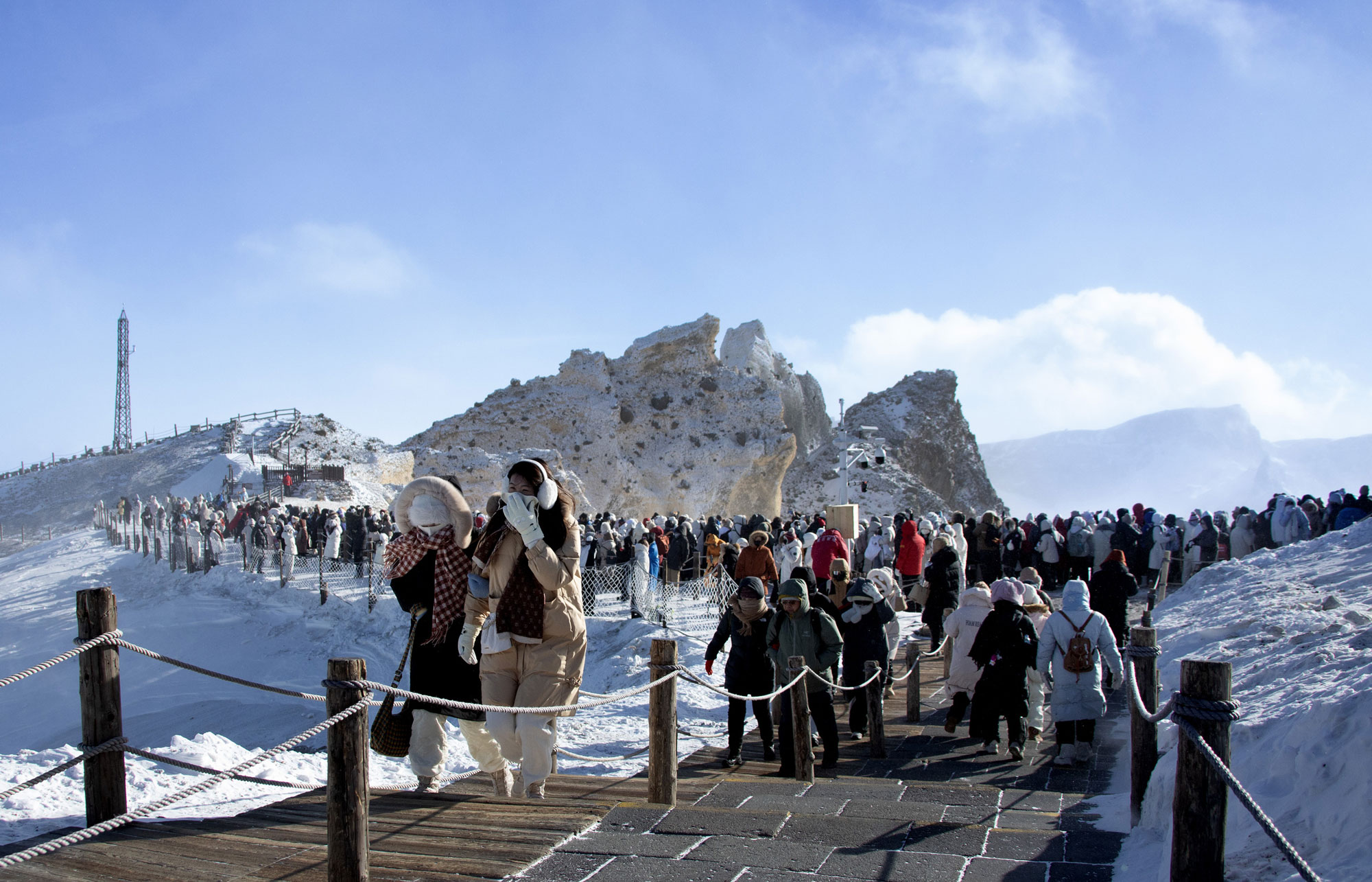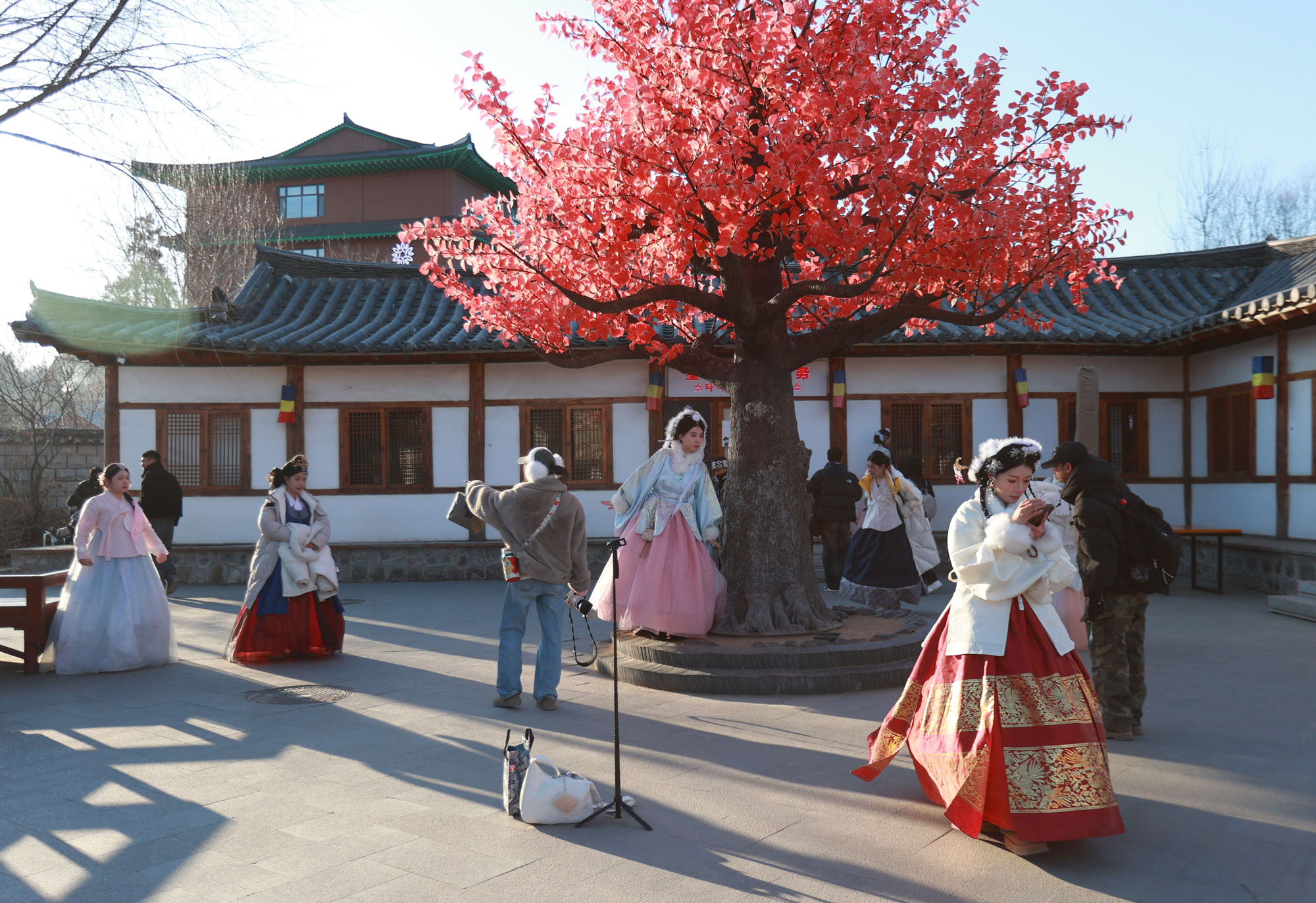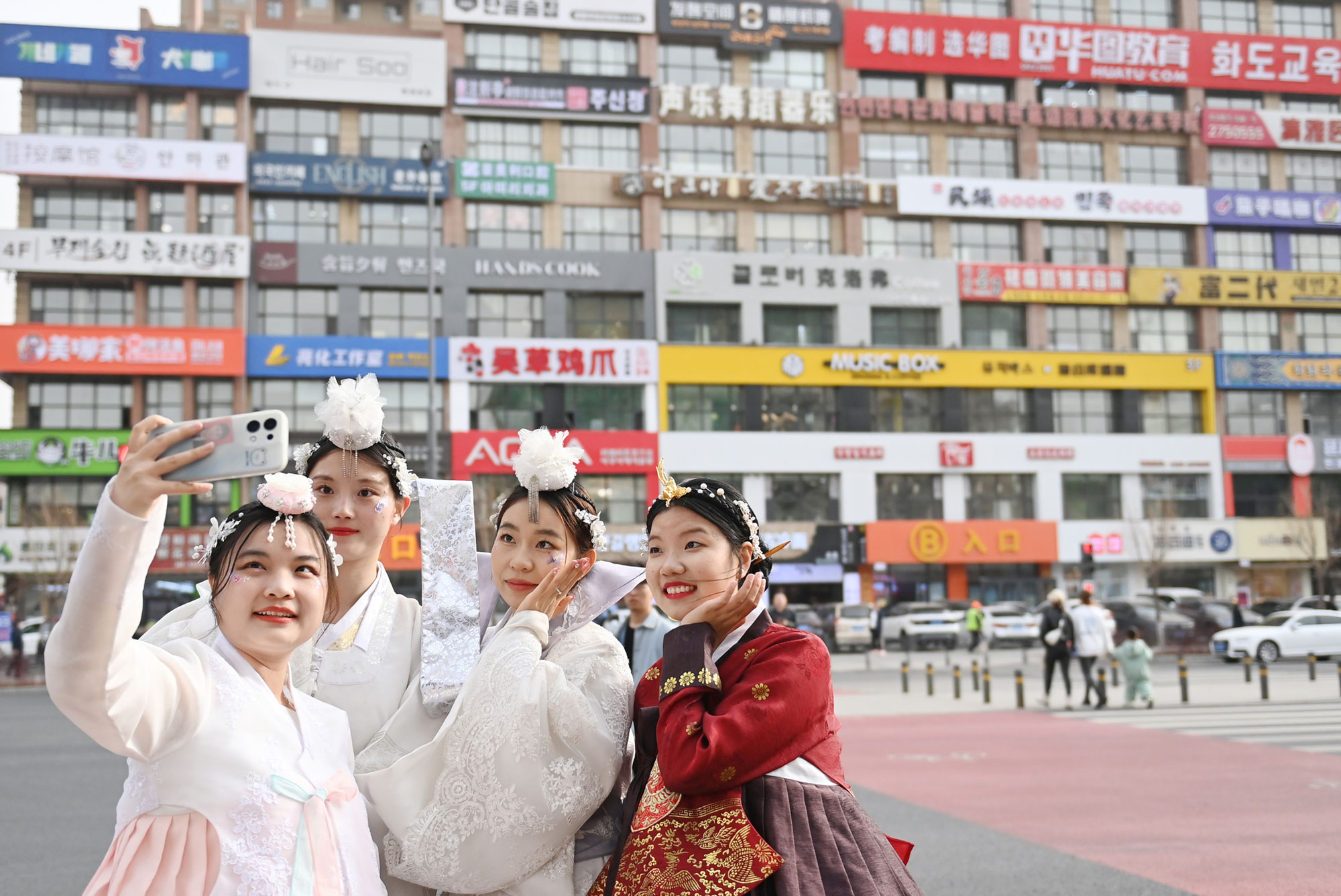
Neon Genesis: How a ‘Scrolling’ Wall Made a Border City Go Viral
If buildings could talk, this one in a small Chinese city bordering the Democratic People’s Republic of Korea might wonder how it became an icon.
By day, it’s just another eight-story commercial block: Pedestrians weave through, delivery scooters zip in and out, and shopkeepers chat in both Chinese and Korean. Then the sun drops, and the building switches on.
The façade fractures into rows of neon signs stacked so tight they blur, flashing Chinese and Korean in a silent, electric shout. Words collide and layer, turning the structure into something almost alive.
On Chinese social media, it’s been dubbed the “Bullet Comment Wall.” The nickname comes from danmu, or “bullet subtitles,” a feature on Chinese streaming sites where comments shoot across the screen in rapid succession.
Drawn by viral videos and influencer posts, tourists are flocking to Yanji to see the wall for themselves. Each night, they gather beneath its glow, cameras in hand, eager to capture the neon spectacle that once only existed on their screens.
Over the last two years, tourist numbers have exploded. During the 2023 Spring Festival, tourism surged 563% from the previous year — injecting nearly 2 billion yuan ($275 million) into the local economy. And by the end of 2024, interest in Yanji kept climbing, with searches for the region soaring and ticket sales for local attractions up 80.9%, according to Chinese tech giant Meituan.
As this year’s Spring Festival kicks off, Yanji is bracing for even bigger crowds. Passenger traffic at Yanji Chaoyangchuan Airport is expected to surge by over 90% compared to last year, the highest growth rate of any airport in China, according to travel firm Tongcheng.

Yanji sits at the heart of Yanbian Korean Autonomous Prefecture, an area in northeastern China home to nearly 570,000 people, more than half of them ethnic Koreans. About 200 kilometers south lies Changbai Mountain, home to Tianchi, or “Heaven Lake” — a volcanic crater lake known for its vivid waters and thick rolling mist. Once just a stopover for visitors heading to the mountain, Yanji has become a destination in its own right.
Yanji is part of a growing wave of wanghong destinations across China — small cities using social media to draw in tourists and businesses. Nudged along by short video platforms and travel influencers, local history, culture, and street life have become digital spectacles.
Yanji’s viral moment started with a bank ad. In late 2021, travel influencer Fang Qi — now with nearly 25 million followers on Douyin, China’s TikTok — posted a video about the city as part of a marketing campaign.
She took viewers beyond the neon-lit wall, capturing buses with Korean-language signs, overflowing plates of crab, and the blend of cultures shaping daily life. “After basking in the southern sunshine, don’t miss out on the diverse beauty of the north,” she told her audience.
Soon, other influencers and celebrities followed. Social media flooded with videos of Yanji’s neon-lit wall, turning it into a viral landmark. The local government jumped in too, launching tourism campaigns to capitalize on the city’s newfound fame.
By 2024, thousands of people gathered under the glowing signs for a winter tourism event, dancing in a scene that felt straight out of a Douyin clip.
Amber Huang, 22, first came for Changbai Mountain’s dramatic landscapes, but Yanji’s deep Korean influences caught her attention. Walking through its streets, she noticed Korean characters on storefronts, taxis playing Korean radio, and a food scene shaped by both cultures. Curious, she sampled rice wine and rice sausage, flavors she rarely encountered back home.
She also paid 250 yuan for a travel photoshoot at the city’s Korean ethnic folk park, where tourists pose in rented traditional Korean or hanbok-inspired costumes. What was once a cultural showcase now doubles as an open-air photo studio, packed with visitors eager to dress up for social media.


Cui Xun, a local who runs a travel photography shop in Yanji’s Korean ethnic folk park, has watched demand grow and styles evolve. Traditionally, Korean hanbok featured simple white designs, but tourists now seek intricate patterns, bold colors, and elaborate headpieces. To keep up, Cui has expanded his selection, catering to changing preferences.
When he opened his shop in 2019, few businesses in Yanji offered similar services. On peak days, he handled up to 500 orders. In the past three years, 270 new travel photography enterprises have opened in Yanji, and the competition keeps growing. Cui’s shop alone now manages up to 100 bookings a day.
Wang Peng, a researcher at the Beijing Academy of Social Sciences, underscores the impact of travel photography on viral tourism. “High-quality photos don’t just boost a city’s visibility — they turn its landmarks and culture into viral currency,” he says. “At the same time, they help preserve traditions and fuel local industries.”
For many visitors, the photos are more than just souvenirs. Chen, 26, from Shenzhen, booked a 499-yuan package that included 40 film negatives and nine retouched images. “Changing into Korean costumes with friends and posing together made the experience special,” she says.
(Header image: Tourists at neon-lit wall in Yanji, Jilin province, Jan. 4, 2025. 500px/VCG)










